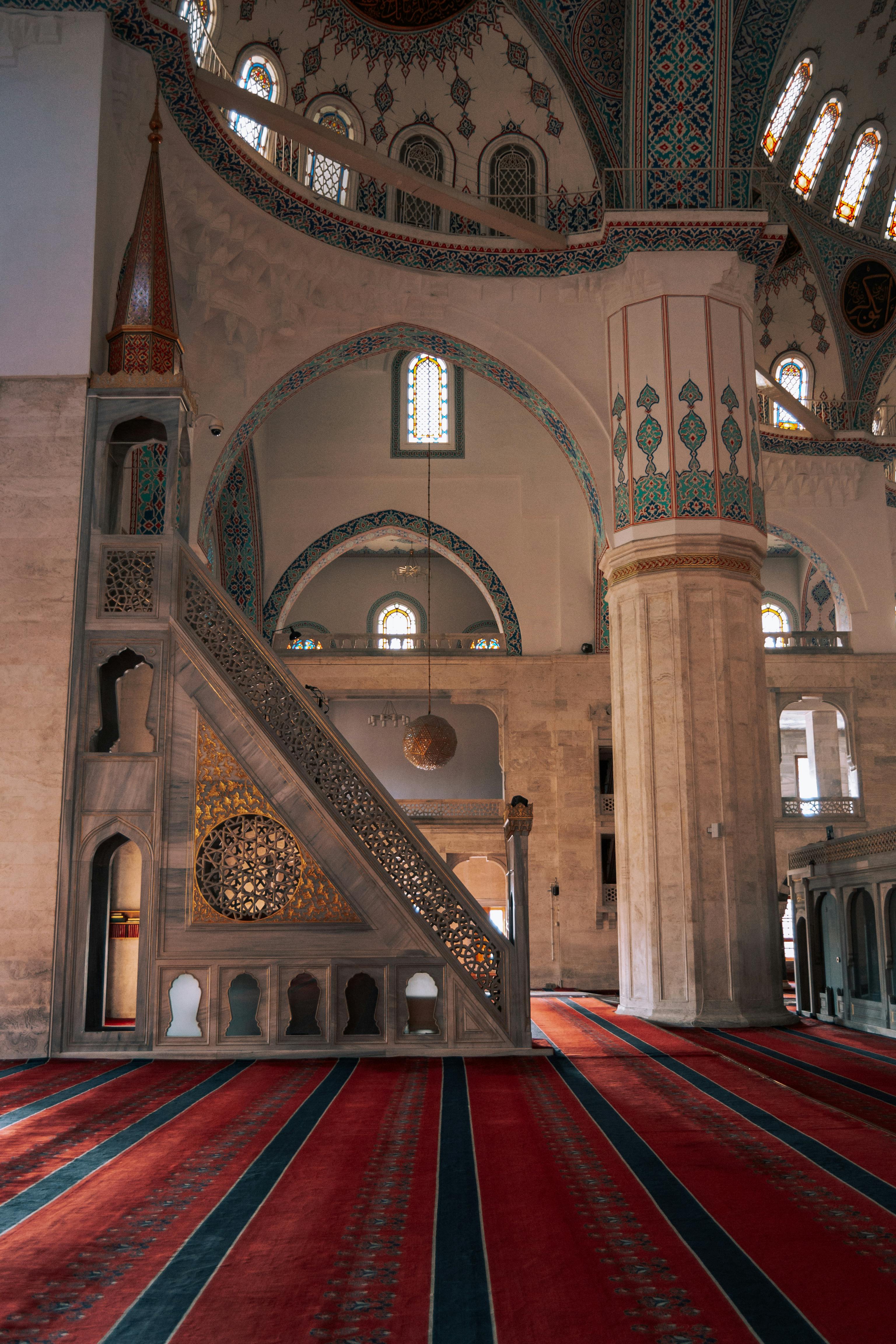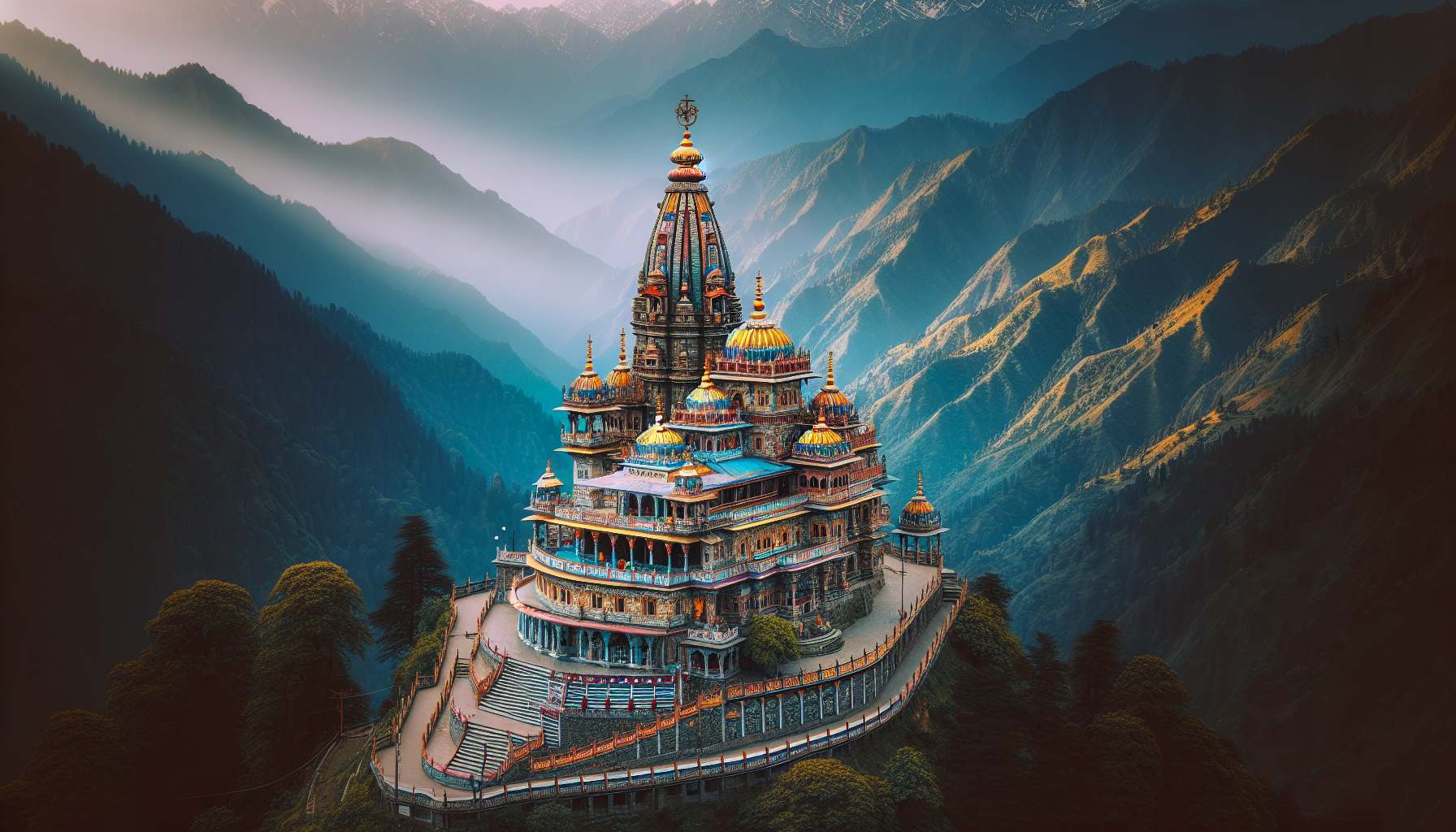India is a land of ancient temples and sacred sites that hold deep spiritual significance. Among these, the Naina Devi Temple in Himachal Pradesh stands out as a mesmerizing destination for pilgrims and tourists alike. Known as “The Eye of Sati,” this temple is believed to be the place where the eyes of the Hindu goddess Sati fell during her self-immolation. As we venture into this article, we will uncover the rich history, captivating legends, and divine allure that make the Naina Devi Temple a must-visit for those seeking a deeper connection with Indian culture and spirituality.

History of Naina Devi Temple
Legend of Sati’s Eye
The Naina Devi Temple in Himachal Pradesh holds a prominent place in Hindu mythology and history. According to legend, the temple is believed to be the place where the eye of Goddess Sati fell when her body was dismembered by Lord Vishnu’s Sudarshan Chakra. The story goes that Sati, the daughter of King Daksha, was married to Lord Shiva against her father’s wishes. In a fit of anger, King Daksha organized a grand yajna (sacrificial ceremony) but did not invite Sati and Lord Shiva. Unwilling to bear the insult, Sati went to the yajna uninvited, where she was scorned and humiliated by her father. Unable to bear the disrespect towards her husband, Sati immolated herself in the ceremonial fire. Lord Shiva, upon learning of Sati’s demise, went into deep meditation, and Sati’s body was dismembered by Lord Vishnu to calm his rage. The places where the body parts fell became sacred shrines, and the Naina Devi Temple marks the spot where Sati’s eye fell.
Construction of the Temple
The construction of the Naina Devi Temple dates back several centuries. The exact year of its construction is uncertain, but it is believed to have been built during the reign of Raja Bir Chand in the 8th century. Over the years, the temple has undergone several renovations and expansions to accommodate the growing number of devotees. Today, it stands as a magnificent testament to the devotion and architectural brilliance of the people involved in its construction.
Significance of the Temple
The Naina Devi Temple holds immense significance for devotees of Hinduism. It is considered one of the 51 Shakti Peethas, which are the sacred sites where body parts of Goddess Sati fell. The temple is dedicated to Goddess Naina Devi, an incarnation of Goddess Parvati. Devotees flock to the temple to seek blessings for health, prosperity, and fulfillment of their wishes. The temple is believed to possess immense spiritual power, and it is said that prayers offered here are answered with unwavering faith.
Location and Access
Geographical Location
The Naina Devi Temple is situated in the Bilaspur district of Himachal Pradesh, India. Perched atop a hill, it offers breathtaking views of the surrounding lush green valleys and the mighty Himalayas. The temple is located at an elevation of approximately 1,220 meters above sea level.
How to Reach the Temple
Reaching the Naina Devi Temple is an adventure in itself. The temple can be accessed by road, and visitors have the option of either driving up the hill or taking a cable car ride. The cable car, also known as the Naina Devi Ropeway, is a popular choice among pilgrims as it offers a unique and thrilling experience. The nearest airport to the temple is in Chandigarh, while the nearest train station is Anandpur Sahib. From there, one can hire a taxi or take a bus to reach the temple.

Architectural Marvel of the Temple
Temple Design and Layout
The Naina Devi Temple is a fine example of North Indian temple architecture. It is built in the traditional Nagara style, characterized by its elongated shikhara (spire) and intricate stone carvings. The temple complex is spread over a vast area and comprises the main shrine, various small temples dedicated to different deities, and other structures for administrative purposes. The main shrine houses the idol of Goddess Naina Devi, which is believed to be self-manifested and made of black stone.
Beautiful Sculptures and Carvings
The temple is adorned with exquisite sculptures and carvings that depict scenes from Hindu mythology and various gods and goddesses. The outer walls of the temple are intricately decorated with ornate floral motifs, while the inner sanctum features a stunning ceiling with beautiful frescoes and paintings. The entire complex is a visual delight, showcasing the skilled craftsmanship of the artisans who worked on its construction.
Sacred Water Bodies
Within the temple premises, there are several sacred water bodies that add to the spiritual ambiance of the place. The most prominent among them is the Naini Lake, which is believed to be the original location where Sati’s eye fell. Devotees often take a dip in the holy water as it is believed to cleanse the body and soul. The serene and tranquil surroundings of the lake make it an ideal spot for meditation and introspection.
Religious Festivals and Celebrations
Navratri Festival
The Naina Devi Temple comes alive during the festival of Navratri, which is celebrated with great pomp and show. Navratri is a nine-night long festival dedicated to the worship of the goddess, and it holds immense importance in Hindu culture. The festival signifies the triumph of good over evil and is an occasion for devotees to express their devotion and seek the blessings of the goddess. During Navratri, the temple is beautifully decorated, and special ceremonies and cultural programs are organized.
Nanda Ashtami
Nanda Ashtami is another significant festival celebrated at the Naina Devi Temple. It falls on the eighth day of the bright half of the lunar month of Bhadrapada (August-September) and is dedicated to the worship of Goddess Nanda Devi, another incarnation of Goddess Parvati. Devotees gather at the temple to offer prayers and participate in the colorful festivities, which include processions, music, dance, and various cultural performances.
Chaitra Fair
The Chaitra Fair, also known as the Naina Devi Fair, is held annually during the Hindu month of Chaitra (March-April). The fair marks the beginning of the new year in the traditional Hindu calendar and is considered highly auspicious. Devotees from far and wide come to the Naina Devi Temple to seek the blessings of Goddess Naina Devi and participate in the grand celebrations. The fair is a vibrant display of local culture, with stalls selling handicrafts, jewelry, and local delicacies. Cultural performances, including folk music and dance, are also organized during the fair.

Spiritual Significance of Naina Devi Temple
Goddess Naina Devi and her Blessings
The Naina Devi Temple is dedicated to Goddess Naina Devi, who is considered the embodiment of divine grace, compassion, and power. Devotees believe that the goddess bestows her blessings upon those who visit the temple with devotion and sincerity. People come to the temple to seek solace, guidance, and blessings for various aspects of their lives, such as marriage, education, career, and health. It is said that the goddess listens to the prayers of her devotees and fulfills their wishes.
Powerful Spiritual Vibes
The Naina Devi Temple exudes a powerful spiritual energy that can be felt as soon as one enters its premises. The serene atmosphere, the aroma of incense, and the rhythmic chants of prayers create a sense of tranquility and peace. Many visitors claim to have experienced a deep sense of spiritual awakening and inner transformation while at the temple. The divine vibrations and positive energy in the temple are believed to purify the mind, body, and soul of the devotees.
Miracles and Mythological Stories
Over the years, the Naina Devi Temple has been associated with numerous miracles and mythological stories. Many devotees claim to have witnessed divine interventions and miraculous healings while praying at the temple. These stories further reinforce the belief in the power and grace of Goddess Naina Devi. Devotees often share their experiences and testify to the miraculous fulfillment of their prayers, which adds to the temple’s fame and draws more people to seek its blessings.
The Pilgrim Experience
Devotee Facilities
The Naina Devi Temple offers various facilities to ensure a comfortable and convenient experience for devotees. The temple complex is equipped with clean restrooms, drinking water facilities, and resting areas for pilgrims. Additionally, there are shops selling religious items, prasad (consecrated food), and souvenirs. The management of the temple works diligently to maintain cleanliness and provide a safe environment for the thousands of visitors who come to the temple every day.
Rituals and Customs
Upon entering the temple, devotees undergo a series of rituals and customs as per Hindu tradition. It is customary to take a bath in the sacred Naini Lake before proceeding to the main shrine. As a mark of respect and devotion, devotees offer flowers, coconut, and other items to the goddess. They also participate in the aarti (ritualistic prayer) and sing hymns in praise of the goddess. The temple priests conduct special ceremonies and offer prayers on behalf of the devotees, ensuring an immersive and spiritually fulfilling experience.
Enchanting View of the Himalayas
One of the highlights of the pilgrimage to the Naina Devi Temple is the mesmerizing view of the Himalayas that unfolds as one ascends the hill. The temple is perched on top of a ridge, providing a panoramic view of the surrounding mountains, valleys, and forests. The majestic snow-capped peaks, the lush greenery, and the crisp mountain air create an ambiance of serenity and awe. Many devotees spend time admiring the beauty of nature and contemplating their spiritual journey amidst the breathtaking scenery.
Surrounding Attractions
Bhimkali Temple
Located in Sarahan, Himachal Pradesh, the Bhimkali Temple is another significant religious site in the state. It is dedicated to the goddess Bhimkali, an incarnation of Goddess Durga. The temple presents a unique blend of Hindu and Buddhist architectural styles and is known for its intricate wood carvings. The annual Bhimkali Festival is a major attraction, drawing devotees and tourists from all over.
Rewalsar Lake
Situated in Mandi district, Rewalsar Lake is a revered site for Hindus, Sikhs, and Buddhists. The lake is believed to have spiritual significance and is surrounded by temples and monasteries. It is said to be the place where Guru Padmasambhava, the founder of Tibetan Buddhism, meditated. The tranquility of the surroundings and the religious fervor make Rewalsar Lake a must-visit destination for spiritual seekers.
Jwalamukhi Temple
Jwalamukhi Temple, located in Kangra district, is dedicated to the goddess Jwalamukhi, the deity of fire. The temple is renowned for its eternal flame that burns without any visible source of fuel. Devotees believe that the flame represents the supernatural power of the goddess. The temple attracts a large number of pilgrims, who come to seek the blessings of the goddess and witness the awe-inspiring sight of the sacred flame.
Local Culture and Traditions
Folk Music and Dance
The region surrounding the Naina Devi Temple is rich in cultural heritage and is known for its vibrant folk music and dance forms. During the Chaitra Fair and other festive occasions, traditional folk performances are held, showcasing the unique musical instruments, colorful costumes, and rhythmic dance movements of the local communities. These cultural performances add to the festive atmosphere and provide visitors with a glimpse into the rich cultural tapestry of the region.
Local Cuisine
The local cuisine of Himachal Pradesh is a delightful fusion of flavors, blending traditional recipes with modern influences. Visitors to the Naina Devi Temple can savor a variety of local delicacies, such as Himachali Dham (a traditional feast), Siddu (steamed stuffed bread), and Madra (a creamy curry). The use of local ingredients like rajma (kidney beans), chhane ka khatta (sour yogurt curry), and spices like cardamom, fennel, and cinnamon, lend a distinct flavor to the dishes.
Traditional Handicrafts
The region surrounding the Naina Devi Temple is known for its intricate handicrafts and handloom products. Local artisans specialize in weaving shawls, carpets, and blankets using natural fibers like wool and pashmina. Visitors can explore the local markets and witness the skilled craftsmen at work, creating beautiful pieces of art. These traditional handicrafts make for unique souvenirs and are a testament to the rich artistic heritage of the region.
Preservation Efforts and Conservation
Conservation Initiatives
The Naina Devi Temple and its surroundings are actively protected and preserved by the local authorities and organizations. Efforts are made to maintain the cleanliness of the temple complex and the sacred water bodies. Regular maintenance and restoration work is carried out to preserve the architectural and artistic aspects of the temple. Additionally, measures are taken to ensure the sustainable use of natural resources and the protection of the fragile ecosystem surrounding the temple.
Role of Local Community
The local community plays a vital role in the preservation and conservation of the Naina Devi Temple. The residents, along with the temple management committee, actively participate in the upkeep of the temple and its surroundings. They contribute to maintaining cleanliness, ensuring the smooth functioning of visitor facilities, and organizing cultural events and festivals. The involvement of the local community fosters a sense of ownership and pride in the temple, leading to better conservation efforts.
Tourism Impact
The Naina Devi Temple attracts a large number of tourists every year, contributing to the local economy and livelihoods. The influx of tourists has led to the development of infrastructure and amenities in the surrounding areas, such as hotels, restaurants, and transportation services. However, it is crucial to strike a balance between tourism development and the preservation of the temple’s heritage and sacredness. Sustainable tourism practices and responsible visitor behavior are necessary to minimize the impact on the environment and cultural integrity of the region.
Conclusion
A visit to the Naina Devi Temple in Himachal Pradesh promises an unforgettable spiritual experience. The temple’s rich history, architectural marvel, and spiritual significance make it a must-visit destination for devotees and travelers alike. The serene surroundings, enchanting view of the Himalayas, and the vibrancy of the local culture further enhance the pilgrimage experience. The Naina Devi Temple stands as a testament to the enduring faith and devotion of countless devotees who seek solace and blessings from the goddess. It is a place where the eternal eye of Sati continues to watch over her devotees, bestowing blessings and fulfillment of their deepest desires.
